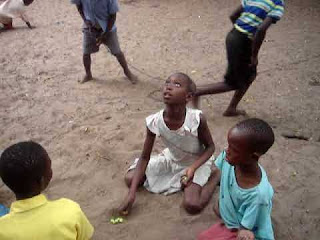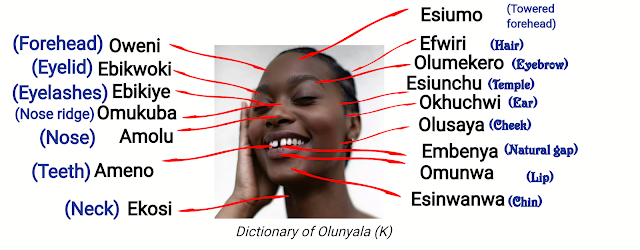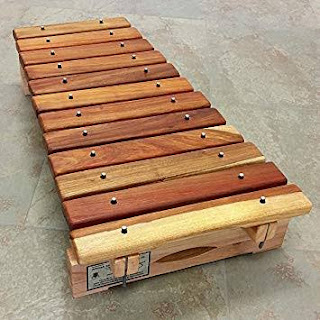THE ABANYALA CIRCUMCISION ANTHEM: The story of the Song of 'Okhwikulira.'
Abanyala ba Kakamega have a cultural song for every cultural occasion. Out of all occasion linked songs, one cultural song stands out clear from the rest: the spirit-invoking song of circumcision called the okhwikulira.
Abanyala are said to have been circumcising boys in a land called Sirikwa before they were attacked by warriors called Abakolongolo. After the split that dispesed them into the wilderness, they stoppen circumcising since their culture could not allow circumcision to go on at time of calamity and war. While on the move, they always yearned for peace in order for them to restart circumcision.
b) Re-introduction of circumcision among Abanyala ba Mukhamba
The history of the re-introduction of circumcision among the Abanyala started at the same time the Abanyala ba Mukhamba split from Abanyala ba Busia in a split called Esiatikho sia Mukhamba.
The split was spearheaded by the leadership of Omwami Mukhamba wa Nabakholo. After Abanyala giving their enemy a resounding defeat in the 1710 war, Abanyala saw that there was need peace hence need to restart circumcision. Mukhamba was from the Abayemba (Abasaya) clan who were the custodians of the circumcision culture. The first age set had only one group to clear the Abakolongolo age set that they had in Sirikwa.
c) Clans on the forefront of reintroducing circumcision among Abanyala.
Abanyala ba Kakamega are made up of most clans which are Sirikwa affiliated and Luo-Baganda affiliated.
The song was re(composed) by elders selected by Mukhamba. The song was a reincanation of the circumcision culture that had died. The new song had a shift in terms of cultural setting, form, characteristic and words to the original Sirikwa song; but retain its purpose.
Abanyala are said to have been circumcising boys in a land called Sirikwa before they were attacked by warriors called Abakolongolo. After the split that dispesed them into the wilderness, they stoppen circumcising since their culture could not allow circumcision to go on at time of calamity and war. While on the move, they always yearned for peace in order for them to restart circumcision.
b) Re-introduction of circumcision among Abanyala ba Mukhamba
The history of the re-introduction of circumcision among the Abanyala started at the same time the Abanyala ba Mukhamba split from Abanyala ba Busia in a split called Esiatikho sia Mukhamba.
The split was spearheaded by the leadership of Omwami Mukhamba wa Nabakholo. After Abanyala giving their enemy a resounding defeat in the 1710 war, Abanyala saw that there was need peace hence need to restart circumcision. Mukhamba was from the Abayemba (Abasaya) clan who were the custodians of the circumcision culture. The first age set had only one group to clear the Abakolongolo age set that they had in Sirikwa.
c) Clans on the forefront of reintroducing circumcision among Abanyala.
Abanyala ba Kakamega are made up of most clans which are Sirikwa affiliated and Luo-Baganda affiliated.
- Sirikwa affiliated clans- these practiced circumcision before they stopped. They quickly took back to their culture. They included many clans: Abasaya (Abayemba), Abasiondo, Abaengele, Abaholo, Abalindavyoki, Abayirifuma, Abamuchuu (abalako), bakwangwachi, Abasonge, Ababenge, Abasenya, Abauma, Abaumo, Abamisoho and Abasia among others.
- Luo affiliated clan- They accepted the rite and moved together with Abanyalala as one group. They included Abamani, Abasumba, Abachimba, Abasuu
The song was re(composed) by elders selected by Mukhamba. The song was a reincanation of the circumcision culture that had died. The new song had a shift in terms of cultural setting, form, characteristic and words to the original Sirikwa song; but retain its purpose.
- The song received a sacrificial launch that made it spiritual- when it is sang in occassion, circumcisors go into a trance. Their body muscles vibrate uncontrollably. Even visiting circumcisors from Bukusus, Tirikis, Masais and Kalenjin would shake for being possessed with the circumcision-spirit during real performance of this songs in Bunyalaland. The scientific connection between the singing and one getting possed remains a puzzle. However, preliminary studies have indicated that the blood of those possessed is filled with high level of adrenaline on hearing the song.
- The song was finctionalized- to make it slightly different from the original, the abanyala made a cultural oath that this song shall be sung by men. Women and young boys were excluded. Young boys were discouraged by invoking Were Kubi to circumcise them in their sleep.
- The content of the song- the song has two parts as hereunder.
 |
| Abanyala Circumcision song esikuliro. |
In this part of the song, a soloist request to the society to open way since the cattle (bull) is being let loose and ready to be taken to graze; a chorus response comes that is an imitation of the same cattle mooing three times in search of that grass. The soloist comes in and further say that the cattle is to be freed and be ready to lick the wet salty soil in a place called esirongo. He goes further to state that, that is the tradition of Abanyala as reignited by Omwami Mukhamba wa Nabakholo. In this song, the soloist goes ahead to state that the circumcision culture was practised from the time they lived in Silikwa Kingdom. He further mentions the names of the various circumcision age sets that were in Silikwa. He then mentions the various sub-groups under each circumcision age set. After that, he mentions various clans that practiced circumcision. He also mentions various great men among Abanyala.
At a deeper level, the song may be psychoanalytically and metaphorically pregnant with sexual images. That the boy is now a warrior who will now be ready go out to search for girls to 'graze' (nobody owned grazing field) or search resources and wealth to build a home. Then after that, that the boy will soon be ready to marry and pay dowry and eat from his esirongo. The use of esirongo as phrase invoked the symbol (omwikale kwa beene) of eating salty soil of esorongo. (If you have heard of the idiom 'esirongo sia nabutubire', you can connect). Thus, the boy will start a family and build his own wealth. Last part declares that the 'grazing' and 'licking of salty soil' will not go on forever- one has to 'hung boots' and 'come home'.b) Part two of the song.
This is sang in different tempo and rhythm. Only the eldest family members could finish the last part of this song as others moved off the singing group to watch the process. Towards the end, the candidate played only one of the pairs of enyimba.
The song concludes that indeed that is the culture of Abanyala from Mukhamba time as from Silikwa. It calls upon the society to bring back the circumcision culture. It is worth noting that there has been textual shift in the singing of the song.
Modernly, 'chiaye' has been replace with 'kiswahili 'baba', 'vava' or 'mama', then 'moo' has been replaced with 'wooo wo' and 'chilote' replaced with meaningless 'Chirote/Kirote/chirode'. Despite some lexical shifts, the songs melody, tempo and purpose have remained intact. Further, note that despite the song being an Abanyala song, it has Olubukusu words such as 'chilote' meaning to 'come back home' yet Abanyala have a different word for the same meaning being communicated by chilote. This may be a further pointer to the Bukusu oriented clan of the Abasaya who were among the composer.f) Time of performance of the circumcision song.
- During circumcisors' ceremonies- The song was sang during ceremonies related to preparation of circumcision season by circumcisors such as okhwingisa engembe (blessing knives for the season)
- During funerals of elderly circumcisors. They sing as they perform a mock of banana flower.
- During circumcision rite- the song is sang when circumcision candidate called omusinde was coming from mudding place (musiroba) after mudding process called okhumaana. It was soloed by a person selected by the child's father preferably out of the fathers age set cluster (esingiro). Or at times,
- Sang by bakoki (age set) at night- this is during the time of blessing the child. This is because they were not supposed to be in the home to participate when the song is to be sang. During this, the bakoki never changed to sing the second melody part in this song. During early morning singing, women were not allowed to join in or cross in front for they could cause an erection problem to some boys to be initiated. Remember boys faced the knife even when aged 18 or 20.
- Sang at the uncles while putting the ekhoni in the neck.
- Sang before mob justice targeting wrong doers in the community such as rapists.
The song is danced in the mind, in the sole and physcally. The circumcisors or those with the spirit of circumcising have their own involuntary dance during the singing. They are usually possessed and shake involuntarily. They demonstrate no patterned movements.
For the men who have joined in to enjoy the culture, the dance was just some sort of controlled ectacy (khusalamata) but rhythmical in nature. It was an imitation of the way excited cattle would dash around with tails lifted in the air. Singers projected their mouth in different direction as they 'mooed' the three times excitedly- although with seriousness. However, since humans have no tails to turn and lift up, singers lifted up the sticks in a symbolic non verbal communication of the coded sexual message. In performance, both side-show verbal and some side-show non-verbal symbolic vulgarity was allowed to acceptable levels
This song was accorded respect of the highest level. Nobody was allowed to sing this song out of its acceptible time or place settings. There were repercussions such as one being circumcised by Were- if still uncircumcised.
Now, with 'safe cut' campaigns, I see this song on its death bed. At first, when early pastors in Bunyala brought a change from okhumana to 'pouring water on omusinde', few non christian families adapted it and still infused the singing of this song although shortly. However, for those who take the boys to hospital for circumcision, they do not sing it in hospital now days, do they?




Good work. Could performance on the musical instruments be recorded for posterity
ReplyDeleteCan't see download icon.can i be helped.Great work.
ReplyDelete